This greenkeeper combines aerial drones with amenity supplies to maintain course
Related Articles
There’s no doubt that Ben Cumberland is a forward-thinking turf professional. In the almost three years that he’s been head greenkeeper at Coxmoor Golf Club he has been busy, for example, redesigning the bunkers, installing new tees with a course architect and working closely with The Sherwood Forest Trust and the Forestry Commission removing trees as part of a long-term plan to restore the popular Nottinghamshire course to its natural heathland habitat.
Indeed, as part of the armoury of tools being used achieve that, the greens team regularly sends up aerial drones to photograph / video parts of the course so that they can determine shade values, for instance, before and after removing trees to allow more light onto certain areas.
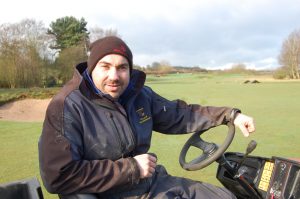
Another aspect of what he considers as essential tools for the job involves his choice of Rigby Taylor – the company at the forefront of supplying innovative products for the successful management and maintenance of turf surfaces – as the preferred supplier of grass seed and amenity products.
He successfully combines the Rigby Taylor science of a planned programme of wetting agents, fertilisers and fungicides with what he describes as a “back-to-basics” programme of turf care at the predominantly (99 per cent) sand-based course.
And his policies are certainly paying dividends, as golfers join the long waiting list for vacancies at the 650-limit membership club which is noted for its firm and fast surfaces.
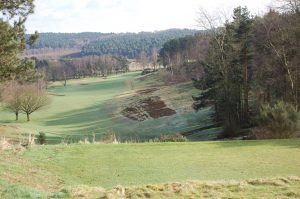
Aged 32, Ben joined Coxmoor – the long-established (in 1913) Championship 18-hole course close in Sutton in Ashfield, near Nottingham – having been a member there for 23 years and after working at a number of local golf clubs, beginning when he was 16 years old at Sherwood Forest.
Over the years, as well as becoming an accomplished golfer himself, Ben had also built a reputation for his proactive approach to greenkeeping and his willingness to lead by example – at one club creating greens that were fast and true “rather than slow and spongy” – traits that the Coxmoor committee and greens chairman wanted when they were seeking a new head greenkeeper who could “bring a modern twist” to the care of the course.
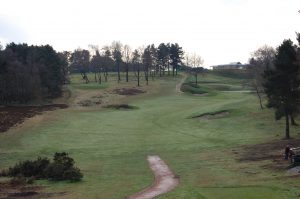
“When I joined, the first thing I knew was needed was a ‘back-to-basics’ turf management regime, introducing more regular cutting – for example, double-cutting the greens daily in the summer, and twice a week double-cutting the tees and surrounds, while the fairways are cut three times a week. Also, on many of the greens I introduced a programme of vertidraining/deep coring using 16 mm tines down to 8 inches, each time back filling the greens with 100 tons of sand,” he says.
“I needed to alleviate the compaction, improve the drainage and remove the organic matter from the top two-inch layer. Within the first month, we had carried out this aeration programme on the greens and nowadays we aerate every month, and core two or three times a year.
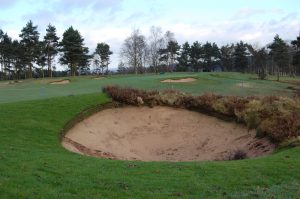
“The result is that the club has got back its greens and fairways for year-round use – with firm and fast surfaces having improved root structures and better repair capabilities. They are now greens and not mud patches through the winter!”
It undoubtedly helps that Ben and three other members of the greens team are very capable golfers, so they have first-hand ‘user’ views on how the greens and fairways should be presented and how they expect them to play.
He continues: “I realised at an early stage in my greenkeeping career that there’s no sense in scrimping and scraping when it comes to amenity supplies; it is counter-productive to use inferior products when you’re aiming for first-class playing surfaces.
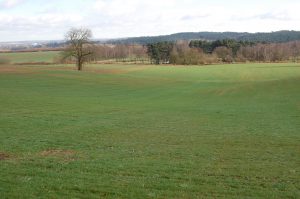
“So, I adopt a wide-ranging programme that includes the use of Rigby Taylor products, including a variety of fertilisers – such as the Microlite Activ8 and Microflow conventional release granular and liquid feeds, respectively – as well as chemical treatments such as Chikara and Hi-Activ for weed control, and the Greenor selective systemic herbicide along with the TriMate stress relief and recovery agent. We also use the Activate XL biostimulant and the Breaker Biolinks wetting agent on the greens, and Breaker Fairway 3 on the fairways and tees.
“We try to supply nutrients to the greens every two weeks,” he says, “preferring a ‘trickle feed’ approach which I feel produces more consistent surfaces.”
These treatments complement the use of Rigby Taylor seed across the course – R105 (100 per cent browntop bent) for the greens and R5 (100 per cent fescue) for the fairways as well as for re-establishing healthland areas and for a newly-established practice area.
The R seed range is pre-treated with Germin-8 – a unique treatment of a cocktail of speciality penetrating surfactants, nutrients, sugars and mycorrhizae to stimulate and support accelerated germination and emergence.

“Winter is the busiest time for us as a team of eight greenkeepers,” says Ben. “It’s when we have most opportunity to instigate the changes and upgrades to the course, on two holes each year while always keeping 16 holes clear.
“We don’t have (can’t have!) lighting rigs, so we have to work with nature to get light onto the greens, hence the tree removal programme – I reckon we’ve taken out around 1,400 trees over the past two winters. We’ve got to work with nature to obtain the playing surfaces that we and the players desire – and I’m glad to say we are doing that, albeit with quite a bit of help from the Rigby Taylor products.”

























